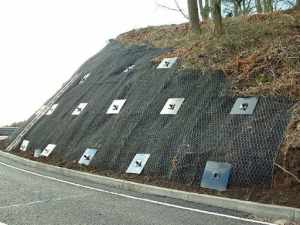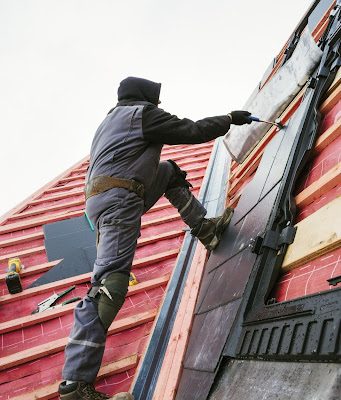An inexpensive but results-oriented method of stabilizing steeps, either on a long or short-term basis, is through soil nails. This is most needed especially in cases where a lot of problems have arisen from landslides. Without any iota of doubt, they also improve the site and make it durable for project works.
This process involves setting up steel nails or the ones threaded with glass fiber, or metal bars, into already drilled holes or openings to stabilize the slope. The outcomes, followed by a proper drainage system, help to decrease the tendencies of a landslide or any other downward sloping movement of the ground.
Therefore, irrespective of the kind of project you want to undertake, be it stabilization of slope, maintenance of the wall’s pillar, etc., you should consider ground nails. Not only are soil nails versatile in nature but also a very feasible method of retaining the earth whilst preventing every form of horizontal movement.
The Soil Nailing Process
This process of installing nails in the ground is called soil nailing. This method involves supporting and strengthening an actual ground to make a slope stable. This technique is recommended in cases where the land is cohesive or filled with fractured rocks. (Provigil)
This process also involves setting up bars close to each other. Support is also positioned frontwards directly into the slanting ground as the construction process takes place from the top to the bottom. Afterward, you can fill up the cracks if the bars were set up in pre-bored holes.
You can also use soil nails to construct a conserving wall to support excavation, tunnels, roadways, bridge support structures, and so on. Even if the nails are not grouted, they can be driven into plain grounds.
Some types of nails used on the ground are driven, grouted, corrosion-protected, jet-grouted, and launched nails. It is also important to note that each of them has its different uses.
Soil Nailing Techniques

The process of using soil nails requires materials like grout and supporting bars set up at a relative angle of ten (10) to twenty (20) degrees in a vertical position. Some of the most used procedures include:
- The bored and grouted technique
- Driven technique
- Drilling method
- Launched method
- Jet grouted technique
If holes are bored on a slanting ground, then endeavor to use nails whose diameters are between 100 to 200 milliliters with a spacing of 1.5m at the center. This should be placed in the grouted holes. You can check out this website to get more information on the techniques.
Benefits of Soil Nailing
Of course, you may be wondering what benefits soil nailing would provide for your ongoing project. Here are a few:
- It is proven to be very effective in an environment that is space-constrained as the nails are shorter. Unlike other ground improvement methods, this one can work in a smaller dense area.
- Because of its nature, it does not easily break apart. Therefore, it has low disruptive tendencies.
- Other techniques may cause damages to properties and structures within the area of work, but soil nailing won’t. Thus, you could call it safety-oriented if you wish.
- The nails are not very expensive to procure and install. So, if you are thinking of cutting down costs in your project, you should consider them because they are very cost-effective.
- It does not need much shoring to aid its effectiveness.
- It helps to prevent excessive roadblocks, thereby, reducing the inconvenience caused to road users and promoting easy movement.
- Another good part of this technique is that it is used for impermanent constructions or projects.
Disadvantages of Soil Nailing
Although the technique offers some benefits, it has some drawbacks. Some of them are:
- You cannot use it for great quantities of groundwater vents during the excavation process.
- This technique of construction is not highly recommended for permanent construction processes.
- During this process, gravel and sand do not agree favorably.
- It is not feasible to apply this technique on grounds that have an increased water table.
Despite the challenges this technique poses during construction, there is no harm in trying it out. You can click on https://www.thebalancesmb.com/what-is-soil-nailing-construction-guidelines-and-tips-844577 to read more about soil nails.
Conclusion
Want to make your construction process stress free or you want to stabilize a landslide, you must not forget using soil nails. Not only is it versatile, but it is also cost-effective, can be used in a less dense area, and won’t cause damages to other properties in the environment during construction.





